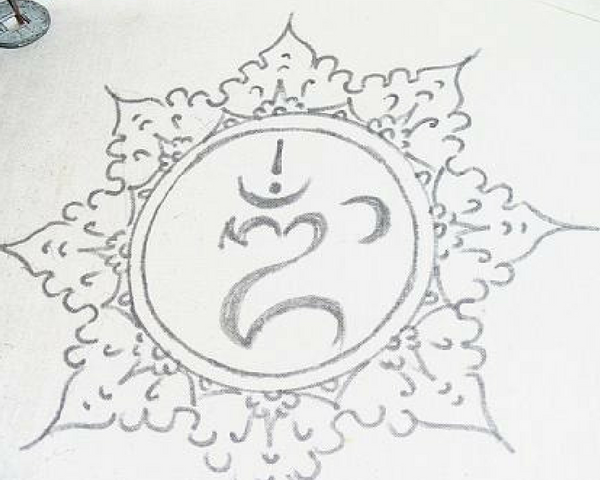Perhaps you have heard the chant Om in yoga class, seen the car sticker or purchased the greeting card .. but do you know what OM means?
Sometimes we can all be guilty of picking up Eastern symbols and rituals without really knowing what they mean .. so here goes (disclaimer : I am no expert .. but this is what I have learnt recently on my journey)
AUM
More commonly written as Om, is a Sanskrit word, and its origins are probably lost to the travel of time, but Om is considered to be the primordial vibration .. the vibration and sound of the Universe, past, present and future. The sound from which all other sounds are formed, and encapsulating the entire range of sounds the human voice can make.
Modern science also finds that everything – every at-OM, molecule and corner of the universe – is formed out of energy vibration. Einsteins equation E=mc2 is that all matter (m) is but an expression of energy (E).
From the ancient Indian texts known as the Vedas (composed in Sanskrit these texts constitute the oldest layer of Sanskrit literature and the oldest scriptures of Hinduism), Om as made up of three phonetic parts and each of those parts are loaded with certain meaning.
Ah: when chanted the sound ‘ah’ emanates from the base of the throat and causes a vibration limited to the back of the mouth .. this is said to symbolise our waking consciousness, the tip of the consciousness iceberg. ‘Ah’ stands for the entire physical world of our experience. When we are awake we are aware of our physical body and the physical world, and we are aware of the experience of the physical world. In this state of being ‘I’ am different to ‘you’ ie.we are not the same but separate.
Ooo: is the vibration that comes forward to the tongue and palette – filling up the mouth with sound and vibration. ‘Ooo’ is said to symbolise dream consciousness or subconscious awareness. In the dream world there are seemingly infinite possibilities attainable; and in our dreams we find we are at once the dreamer and also in the dream .. dream and dreamer are one and the same.
Mmm: the third syllable closes the lips and creates a vibration of the whole mouth, face and head. ‘Mmm” is a symbol for deep, dreamless sleep consciousness, a realm deeper and larger than dream consciousness. In this state of consciousness there is no active imagination, nor is there any waking consciousness (unconscious) – it is completely free and empty yet you are still there, completely calm, aware but without judgement, like, dislike or preconceptions.
There is also a fourth aspect to the chanting of AUM – the momentary silence that surrounds it as you take a breath between each chant. Tis silence can be quite powerful and symbolises that behind the silence is the voice beyond being and no-being, that cannot be known or named, from which all things and consciousness arise and go back to. This is said to be super consciousness, transcending all three other states.
Om Mantra (union of mind, breath, and Om)
* In this practice we come to experience mind, breath and mantra flowing in union.
* Take time to settle your posture, gather yourself into the moment and relax into your body and breath
* Reflect on your intention, to gently hold the mantra OM as your home-base in meditation.
* When you sense a stillness in your physical form, gently shift your awareness to just your breath
* Be aware of your complete inhalation and exhalation
* Allow time for your breath to also settle into a stillness, and ease of being present with the just the breath
* When ready simply start to silently note OM on the inhalation and exhalation (some bring the mantra into either inhalation or exhalation .. see what appears naturally for you)
* You can voice the mantra or continue reciting it silently in the mind
* The mantra will naturally slow as it weaves into the breath, and so too will the mind begin to calm
* As the mind becomes calm, the body relaxes, and the breath becomes even slower.
* We don’t need to force the mantra to slow, a rhythm will unfold quite naturally
* Remain alert and thus meditation will gradually deepen.
Some OM Mantra Tips
~ Mantras can be used anytime and anywhere – they are totally portable
~ Saying your mantra internally means it is always with you, at the beach, at work or with friends
~ Don’t push or strive too hard, allow the mantra to weave itself into your breath and mind, sometimes loud and sometimes soft
~ As in other types of meditation you will be distracted and then you notice the distraction and gently, and kindly, return to your mantra
“The mantra, taking us into the present moment and beyond the ego,
slips through the narrow gate into the city of God”
John Main, Benedictine Monk

